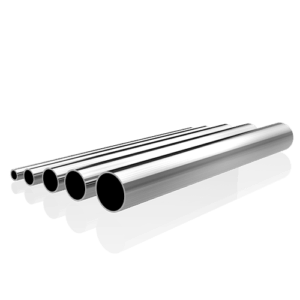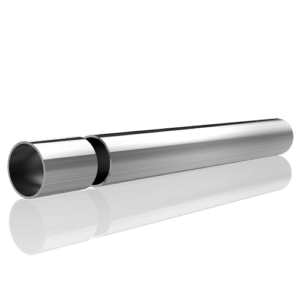Introduction

In the construction industry, the selection of materials is crucial for ensuring the durability, safety, and efficiency of a project. One material that stands out for its exceptional performance is pipe stainless steel 316. Known for its superior corrosion resistance and strength, pipe stainless steel 316 is increasingly becoming the material of choice for various construction applications. This blog explores the benefits of using 316 stainless steel pipe in construction projects, detailing its advantages, applications, and key considerations.
What is Pipe Stainless Steel 316?
Pipe stainless steel 316 is a high-grade stainless steel alloy that contains molybdenum, which enhances its resistance to corrosion, especially in chloride environments. It is widely used in construction due to its mechanical properties and durability. Understanding its composition and characteristics helps explain why it is favored in demanding environments.
Composition of Pipe Stainless Steel 316
| Element | Composition (%) |
|---|---|
| Chromium | 16-18 |
| Nickel | 10-14 |
| Molybdenum | 2-3 |
| Carbon | ≤0.08 |
| Manganese | ≤2.0 |
| Silicon | ≤1.0 |
| Phosphorus | ≤0.045 |
| Sulfur | ≤0.03 |
Benefits of Using Pipe Stainless Steel 316 in Construction
Superior Corrosion Resistance
One of the standout features of 316 stainless steel pipe is its excellent resistance to corrosion. This is primarily due to its molybdenum content, which enhances its ability to withstand harsh environments, including marine and industrial settings.
Comparison of Corrosion Resistance:
| Material | Corrosion Resistance |
|---|---|
| Stainless Steel 316 | High |
| Stainless Steel 304 | Moderate |
| Carbon Steel | Low |
High Strength and Durability
Pipe stainless steel 316 is renowned for its high tensile strength and durability. It can withstand significant mechanical stress and deformation without losing its structural integrity. This makes it an ideal choice for load-bearing applications and high-pressure environments.
Excellent Temperature Resistance
The temperature resistance of 316 stainless steel pipe is another significant advantage. It maintains its mechanical properties and resistance to oxidation even at elevated temperatures, making it suitable for high-temperature applications.
Temperature Resistance Comparison:
| Material | Maximum Operating Temperature (°C) |
|---|---|
| Stainless Steel 316 | 870 |
| Stainless Steel 304 | 870 |
| Carbon Steel | 650 |
Aesthetic Appeal
Pipe stainless steel 316 has a smooth, polished surface that maintains its appearance over time. Its resistance to staining and tarnishing ensures that it remains visually appealing in architectural and decorative applications.
Low Maintenance Requirements
Due to its corrosion resistance and durability, 316 stainless steel pipe requires minimal maintenance. This reduces long-term costs associated with repairs and replacements, making it a cost-effective option in the long run.
Sustainability and Recyclability
Stainless steel 316 is fully recyclable, which aligns with sustainable construction practices. Its long lifespan and the ability to be recycled at the end of its life contribute to environmental conservation.
Applications of Pipe Stainless Steel 316 in Construction
Pipe stainless steel 316 is used in a variety of construction applications due to its desirable properties. Some of the key applications include:
Marine Construction
In marine environments, where exposure to saltwater can cause rapid corrosion, 316 stainless steel pipe is the material of choice. It is used in seawater systems, offshore structures, and shipbuilding.
Chemical Processing Plants
Chemical processing facilities often handle corrosive substances that can degrade other materials. 316 stainless steel pipe is used in piping systems, tanks, and reactors due to its resistance to chemical attack.
Architectural Applications
The aesthetic properties of pipe stainless steel 316 make it a popular choice for architectural features such as handrails, facades, and structural supports. Its polished finish adds a modern and sleek appearance to buildings.
Food and Beverage Industry
In the food and beverage industry, where hygiene and cleanliness are crucial, 316 stainless steel pipe is used for its ease of cleaning and resistance to contamination. It is commonly found in processing equipment, storage tanks, and transport pipes.
Comparison of Pipe Stainless Steel 316 to Other Materials
To better understand the advantages of 316 stainless steel pipe, let’s compare it with other common materials used in construction:
| Property | Pipe Stainless Steel 316 | Carbon Steel | Plastic |
|---|---|---|---|
| Corrosion Resistance | High | Low | Moderate |
| Strength | High | Moderate | Low |
| Temperature Resistance | High | Moderate | Low |
| Maintenance | Low | High | Low |
| Aesthetic Appeal | High | Low | Moderate |
Key Considerations When Using Pipe Stainless Steel 316
Cost
Pipe stainless steel 316 is more expensive than other materials like carbon steel or plastic. However, its longevity and low maintenance requirements can offset the initial cost over time.
Fabrication and Installation
While stainless steel 316 is relatively easy to fabricate, special care is required during welding and cutting to avoid contamination and ensure quality. Proper techniques should be used to maintain its properties.
Environmental Factors
Consider the environmental conditions where the pipe will be used. Stainless steel 316 performs exceptionally well in marine and chemical environments, but ensure that it is suitable for the specific application and conditions.
Maintenance and Care of Pipe Stainless Steel 316

Although 316 stainless steel pipe requires minimal maintenance, some best practices can help prolong its lifespan and ensure optimal performance:
Regular Cleaning
Regular cleaning with mild detergents and water helps maintain the appearance and hygiene of the stainless steel. Avoid using abrasive materials that can scratch the surface.
Inspection
Periodic inspections should be conducted to check for any signs of wear, damage, or contamination. Early detection of issues can prevent potential failures.
Proper Handling
During installation and maintenance, handle the pipes carefully to avoid any damage or contamination that might affect their performance.
Conclusion
Pipe stainless steel 316 offers numerous benefits for construction projects, including superior corrosion resistance, high strength, excellent temperature resistance, and low maintenance requirements. Its versatility makes it suitable for various applications, from marine and chemical processing to architectural and food industry uses. By understanding the advantages and key considerations of 316 stainless steel pipe, construction professionals can make informed decisions that enhance the durability and performance of their projects.
FAQ
Q:What makes pipe stainless steel 316 different from other stainless steel grades?
A:Pipe stainless steel 316 contains molybdenum, which significantly improves its corrosion resistance, particularly in chloride environments. This makes it more suitable for harsh and marine conditions compared to other grades like 304.
Q:Is 316 stainless steel pipe more expensive than other materials?
A:Yes, 316 stainless steel pipe is generally more expensive than materials like carbon steel and plastic. However, its durability, low maintenance, and longevity can justify the higher initial cost.
Q:Can pipe stainless steel 316 be used in high-temperature applications?
A:Yes, pipe stainless steel 316 maintains its mechanical properties and corrosion resistance at high temperatures, making it suitable for high-temperature applications up to around 870°C (1600°F).
Q:How should 316 stainless steel pipe be cleaned and maintained?
A:316 stainless steel pipe should be cleaned regularly with mild detergents and water. Periodic inspections and proper handling during installation and maintenance can help prolong its lifespan.
Q:Is pipe stainless steel 316 recyclable?
A:Yes, pipe stainless steel 316 is fully recyclable, which supports sustainable construction practices and reduces environmental impact.
